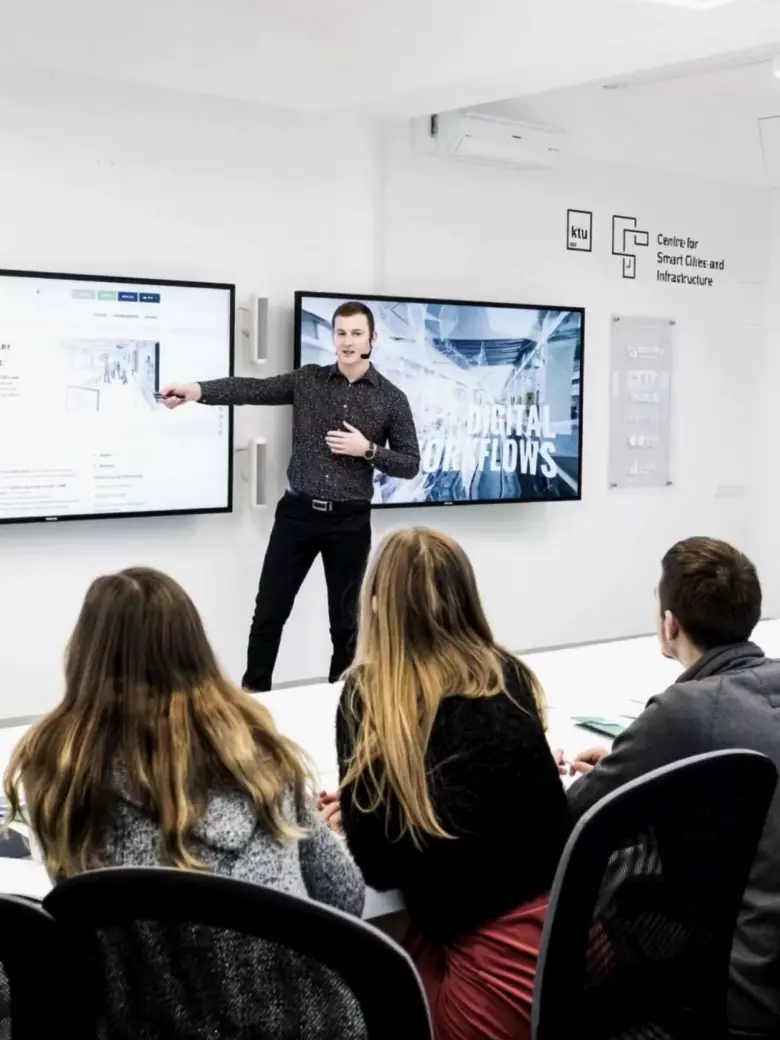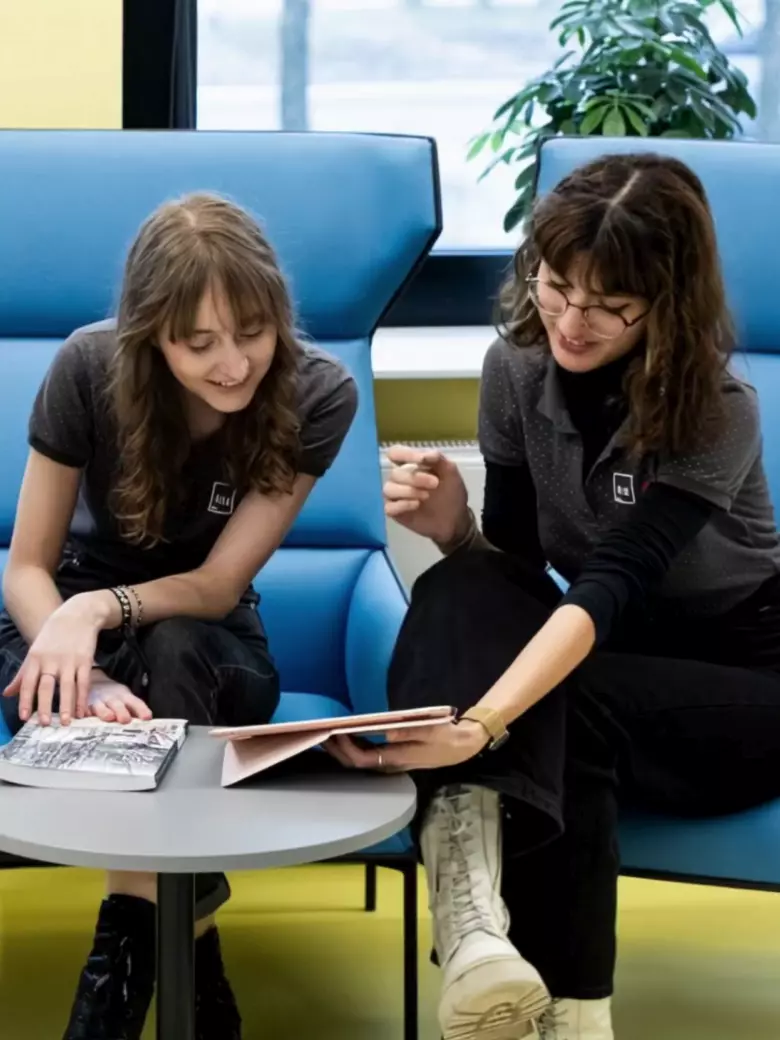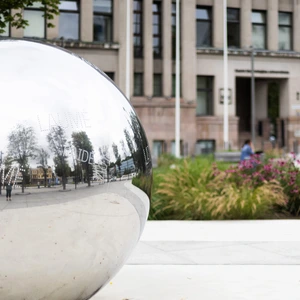The programme is only conducted in Lithuanian language. Entry requirements for this particular programme can be found in the programme description provided in Lithuanian language.
in Lithuanian
Creating sustainable buildings
Civil engineering is a combination of tradition and innovation. After graduating, you’ll have a fundamental understanding of the design, construction and operation of buildings before specialising in structural engineering, civil engineering or building services. Through Building Information Modelling (BIM) and teamwork experience on a collaborative project with architecture students, you’ll gain the knowledge you need to develop complex, sustainable solutions that meet the needs of modern society.

During your studies, you will have the opportunity to acquire market-valued knowledge and apply contemporary Building Information Modelling (BIM) methodology, which allows you to model and integrate all stages of the construction process: design, production, construction and operation.

Dozens of laboratories for different materials, structures, building engineering systems, updated computer classrooms, the Smart Cities and Infrastructure Centre, the InfinityLab group virtual reality classroom, and the newly equipped KTU Library will be available for the development of your academic skills and knowledge.

During their studies, students from the Civil Engineering and Architecture degree programmes implement real-life tasks provided by social partners in a joint project module. Working in interdisciplinary groups, you will gain practical skills in communication, time management, work distribution and other essential practical skills.

Students can choose from three specialisations through a competitive process. They can also choose alternative study modules and themes for their final thesis. We encourage our students to take part in international exchange programmes, participate in micro-modules, collaborate with companies.
From structural foundations to ventilation systems, design buildings and oversee their construction.
As one of the oldest and most established engineering disciplines, civil engineering has well-defined responsibilities. Throughout your studies, you will gain expertise in the entire building life cycle, and your chosen specialisation will guide you toward the right career path.
Here are some of the careers you can pursue after your studies:
Acts as a coordinator in the construction process, ensuring that all work is carried out according to the plan and building design. Responsible for the quality and execution of the project, overseeing everything from the preparation of technical documents to the final handover to the client.
Plays a key role in the conceptual phase of a building, developing a computer model, interpreting client expectations, and preparing detailed drawings for the construction phase. This role can involve designing individual building components, entire structures, or even large building complexes.
Ensures that buildings maintain an optimal microclimate by designing heating, ventilation, and air conditioning (HVAC) systems. Also responsible for planning plumbing systems and making key decisions to enhance a building’s energy efficiency and ensure compliance with energy class standards.
| Module name | Credits | Method of organisation |
|---|
| Computer-Aided Design in Civil Engineering | 6 | On-campus learning |
| Information Technologies 1 | 6 | On-campus learning |
| Introduction to Civil Engineering | 6 | On-campus learning |
| Mathematics 1 | 6 | On-campus learning |
| Media Philosophy | 6 | Blended learning |
| Sustainable Development | 6 | On-campus learning |
| Module name | Credits | Method of organisation |
|---|
| Architecture and Structures of Residential Buildings | 3 | On-campus learning |
| Building Materials and Basics of Material Science | 6 | On-campus learning |
| Mathematics 2 | 6 | On-campus learning |
| Physics 1 | 6 | On-campus learning |
| Theoretical Mechanics | 3 | On-campus learning |
| Academic and Technical Communication in English (Level C1) | 6 | On-campus learning |
| Academic and Technical Communication in French (Level C1) | 6 | On-campus learning |
| Academic and Technical Communication in German (Level C1) | 6 | On-campus learning |
| Module name | Credits | Method of organisation |
|---|
| Architecture and Structures of Non-Residential Buildings | 6 | On-campus learning |
| Basics of Fluid Mechanics | 3 | On-campus learning |
| Building Physics | 3 | On-campus learning |
| Building Regulations | 3 | On-campus learning |
| Geology | 3 | On-campus learning |
| Mechanics of Materials | 6 | On-campus learning |
| Theory of Probability and Statistics | 6 | On-campus learning |
| Module name | Credits | Method of organisation |
|---|
| Basics of Urbanism | 3 | On-campus learning |
| Building Services Systems | 6 | On-campus learning |
| Construction Technology and Organisation | 6 | On-campus learning |
| Engineering Geodesy and Training Practice | 6 | On-campus learning |
| Soil Mechanics | 3 | On-campus learning |
| Structural Mechanics | 6 | On-campus learning |
| Module name | Credits | Method of organisation |
|---|
| Construction Economics | 3 | On-campus learning |
| Electric Power Systems in Construction | 3 | On-campus learning |
| Engineering and Special Purpose Buildings | 6 | On-campus learning |
| Foundation Structures | 3 | On-campus learning |
| Programming Basics for Civil Engineers | 6 | On-campus learning |
| Reinforced Concrete and Masonry Structures 1 | 3 | On-campus learning |
| Water Supply and Sewage | 6 | On-campus learning |
| Technology of Special Construction and Enginery | 6 | On-campus learning |
| Applied Structural Mechanics | 6 | On-campus learning |
| On-campus learning |
| Module name | Credits | Method of organisation |
|---|
| Building Information Modelling | 3 | On-campus learning |
| Metal and Timber Structures 1 | 3 | On-campus learning |
| Innovative Construction Product Manufacturing Technology | 6 | On-campus learning |
| Product Development Project | 12 | On-campus learning |
| Technology Entrepreneurship | 6 | Blended learning |
| Building Information Modelling of Building Services Systems | 6 | On-campus learning |
| Heating, Ventilation, and Air Conditioning Systems | 6 | On-campus learning |
| Information Modelling of Building Construction | 6 | On-campus learning |
| Monolithic and Masonry Construction Technologies | 6 | On-campus learning |
| Information Modelling of Building Structures | 6 | On-campus learning |
| Reinforced Concrete and Masonry Structures 2 | 6 | On-campus learning |
| On-campus learning |
| Module name | Credits | Method of organisation |
|---|
| Environmental Protection in Construction | 3 | On-campus learning |
| Joint Project | 6 | On-campus learning |
| Organisation of Occupational Safety and Health | 3 | On-campus learning |
| Optional Subjects 2026 | 6 |
| Operation and Renovation of Building Services Systems | 6 | On-campus learning |
| Renewable Energy Systems in Buildings | 6 | On-campus learning |
| Construction Planning and Project Management | 6 | On-campus learning |
| Reconstruction and Repair Technologies of Buildings | 6 | On-campus learning |
| Engineering Structures | 3 | On-campus learning |
| Metal and Timber Structures 2 | 9 | On-campus learning |
| On-campus learning |
| Module name | Credits | Method of organisation |
|---|
| Bachelor’s Degree Final Project | 15 | On-campus learning |
| Professional Internship | 15 | On-campus learning |
The programme is only conducted in Lithuanian language. Entry requirements for this particular programme can be found in the programme description provided in Lithuanian language.
in Lithuanian
When I started studying this study programme, I did not imagine my future yet, but during my studies, with the help of a KTU lecturer, I got a job in a bridge design company and discovered my passion. This is probably the most memorable event because it is the reason why I am where I want to be today. I think that the field of civil engineering has a lot of promise, and studying at KTU has given me a different understanding of built structures.

I found this field of study practical as it provides the opportunity to create something tangible. The studies gave me technical knowledge, analytical problem-solving skills and practical experience, which I am now applying as a construction engineer. I enjoyed the practical parts of the lectures the most – the laboratory work in the construction laboratories, the practical design tasks and the various experiments.

I believe that KTU is not only a university, but also a platform that can connect business representatives, students and researchers to share knowledge or ideas for joint projects. KTU students are curious, inquisitive and quick to understand new constructions or specifics of our field.
All elements of this programme, from class discussions to final assessments, are conducted exclusively in Lithuanian.
Technical drawing skills will come in handy, but if you don’t have them, you’ll learn everything in your first year. Lectures use Revit, Tekla, DDS-CAD, MagiCAD, Sistela, Bentley and many other software packages. The course starts with 2D drafting and moves on to 3D and various specialist programmes. There is no need to learn how to use them before enrolling, you will gain all the knowledge during your studies.
Career opportunities after graduating in civil engineering are very wide, with around 8,000 construction companies operating in Lithuania. Construction engineering is often listed as one of the most in-demand professions in employment service reports. This is also confirmed by a survey of graduates conducted by the Faculty – as many as 70% of them started their careers during their studies.

Talk to us, study with us:
K. Donelaičio St. 73, LT-44249 Kaunas
phone +370 679 44 555
email studijos@ktu.lt
Faculty of Civil Engineering and Architecture
IX Chamber
Studentų g. 48, LT-51367 Kaunas
email saf@ktu.lt
 virtual tour
virtual tour